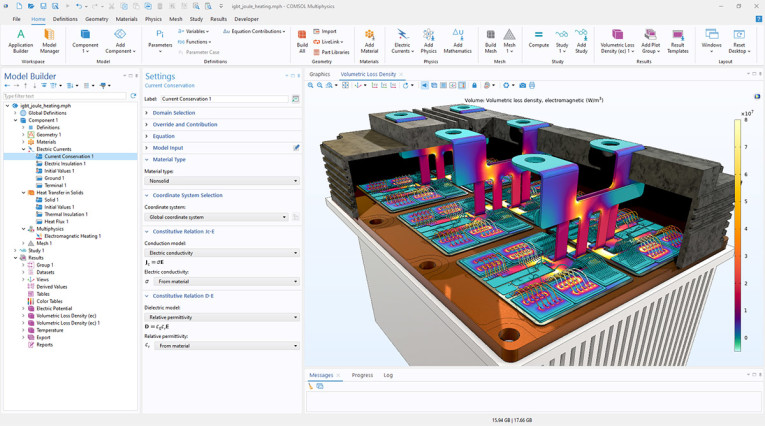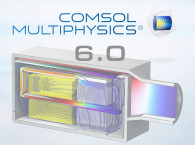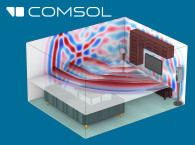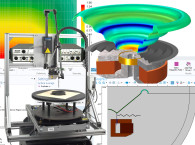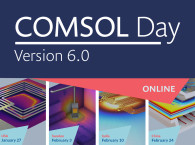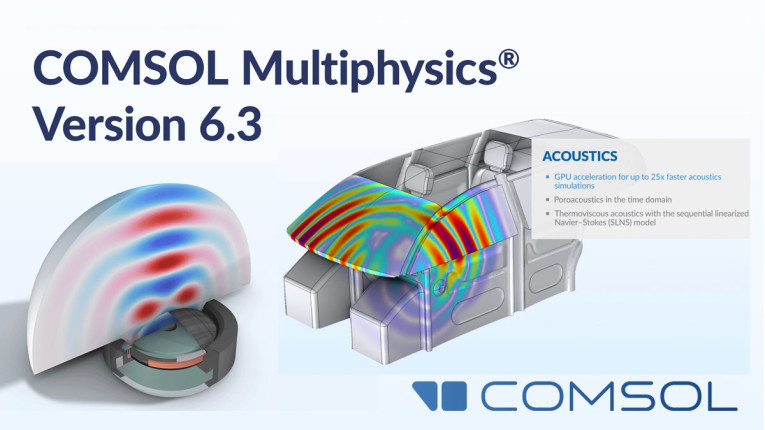
Yes, the largest news for COMSOL Multiphysics release 6.3 is that simulations are now significantly accelerated with GPU support - something that all users will highly appreciate. For those working with COMSOL's Acoustics Module, this means the possibility to have up to 25x faster transient acoustics simulations, representing a very powerful tool for visualization and better understanding of sound behavior in multiple domains. Developers working on organizations using complex models and multiple geometry sources will also appreciate the addition of new automated geometry preparation tools for imported CAD models (yes, you can now quickly clean-up those models created in pirated copies of Solidworks that you get all the time!).
The new automated geometry preparation tools streamline model development by removing unnecessary details and defects in CAD models, resulting in higher-quality meshes for enhanced simulation reliability. Users can thereby import larger industrial CAD models, which originally were not meant for simulation, and use the automated geometry preparation tools to make the necessary adjustments for robust simulations.
Of course, COMSOL Multiphysics version 6.3 delivers an extensive set of new features and capability updates for all applications of physics modeling and simulation app development, including an interactive Java environment that allows for on-the-fly model modifications using the COMSOL API. Additionally, a chatbot tool is available to assist with Java coding and answer general queries.
Version 6.3 also improves data sampling for surrogate model creation, electromechanical modeling of thin structures, now with tools for moisture-induced swelling, and simplified workflows for spot welds and fasteners. COMSOL also added more accurate electrostatic force calculations for MEMS devices, efficient modeling of laminated iron in motors and transformers, and easier modeling of periodic structures in wave optics. Also listed in the new features are Reynolds-stress turbulence models, non-Newtonian flow in porous media, and fast drying simulations with nonequilibrium moisture transport. There's also a new precipitation and crystallization simulation for particle nucleation and growth with particle size distribution.
You will need to check out the new tutorials to understand what those are all about, but COMSOL has complemented this release with in-depth information and release highlights.
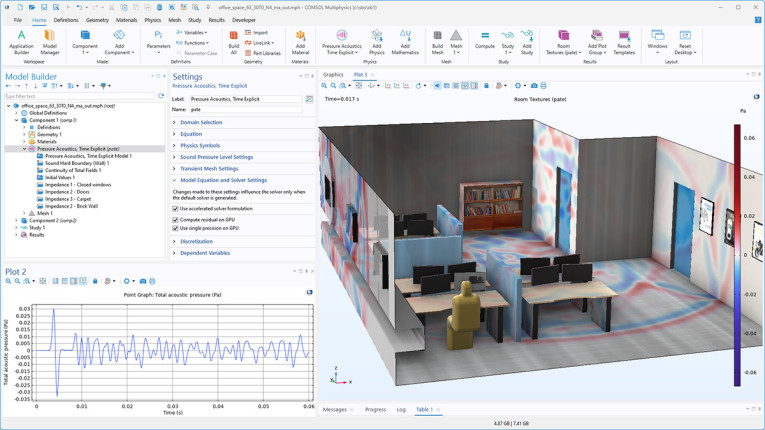
Up to 25x Faster Transient Acoustics Simulations
The Acoustics Module now offers GPU support for up to 25x faster simulations of pressure acoustics in the time domain, along with new capabilities for poroacoustics, including support for modeling anisotropic materials and frequency-dependent material properties in the time domain.
"The new GPU support for transient acoustic simulations is invaluable for engineers working on automotive sound systems or optimizing acoustics in office and residential spaces," says Mads J. Herring Jensen, development manager at COMSOL. "Being able to produce acoustics simulations much faster will help our users to ultimately develop new design iterations and product innovations more quickly as well."
Detailed Electric Discharge and Breakdown Simulations
COMSOL Multiphysics version 6.3 also introduces the Electric Discharge Module, which offers powerful simulation capabilities spanning a wide range of electric discharge scenarios, including atmospheric pressure gas discharges, breakdown phenomena in liquids like transformer oil, and solid materials like insulating polymers.
"The Electric Discharge Module makes new modeling capabilities available that aid in the design of anything from consumer electronics to high-voltage systems," said Lipeng Liu, technical product manager at COMSOL. "Electric discharge simulation has been a high priority for us, and it is rewarding to see COMSOL's multiphysics strengths come together in this product. Discharge phenomena involve multiple physics and are really suited for the full potential of COMSOL’s modeling tools."
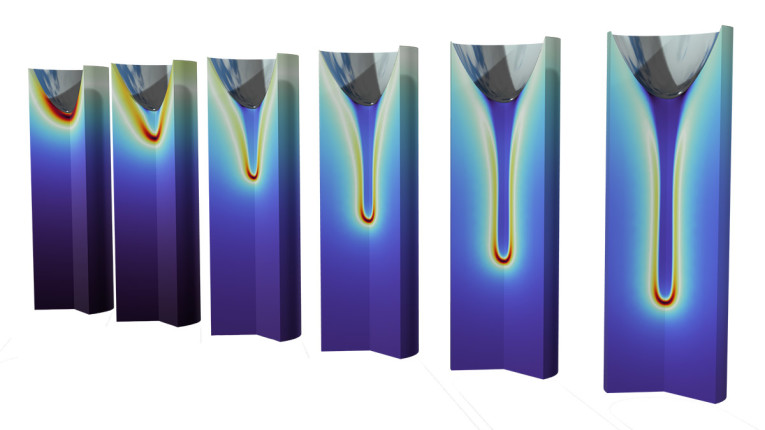
More Acoustics Module Updates
Version 6.3 adds an accelerated solver to the Pressure Acoustics, Time Explicit interface. When the solver's options for GPU support are selected, the acceleration can be significantly increased. A NVIDIA card is required for this acceleration, and when the problem fits within the GPU’s memory, there can be speedups of up to 25x compared to using multicore CPUs. Key features — such as the general Impedance condition for applying real impedance data of absorbing surfaces and the Absorbing Layer feature for modeling open domains — are compatible with the GPU-accelerated solver.
Among the new things in the Acoustics Module we would like to highlight the new interior impedance models that have been added to the Pressure Acoustics, Frequency Domain interface: Thin plate, Membrane, Porous mass layer, and Perforated plate. These models, also known as "transfer impedance models", are available for the Interior Impedance, Pair Impedance, and Impedance conditions in the Acoustic BEM-FEM Boundary coupling.
In the new and updated Tutorial Models, we recommend checking out the "Midwoofer Harmonic Distortion Analysis with KLIPPEL Measurements," focusing on an automotive midwoofer modeled using the lumped parameter approach, with a lumped electric circuit based on the large-signal parameters. The model results are compared with measurements performed with a Klippel system, expanding on the original collaboration efforts between COMSOL and Klippel for integration of Simulation and Measurement Data.
For all the release highlights go here.
For more details about the Acoustics Module updates and in particular the new and updated tutorial models, go here.
COMSOL Multiphysics, COMSOL Server, and COMSOL Compiler software products are supported on Windows, Linux, and macOS.
Download COMSOL Multiphysics Version 6.3 here.
www.comsol.com
